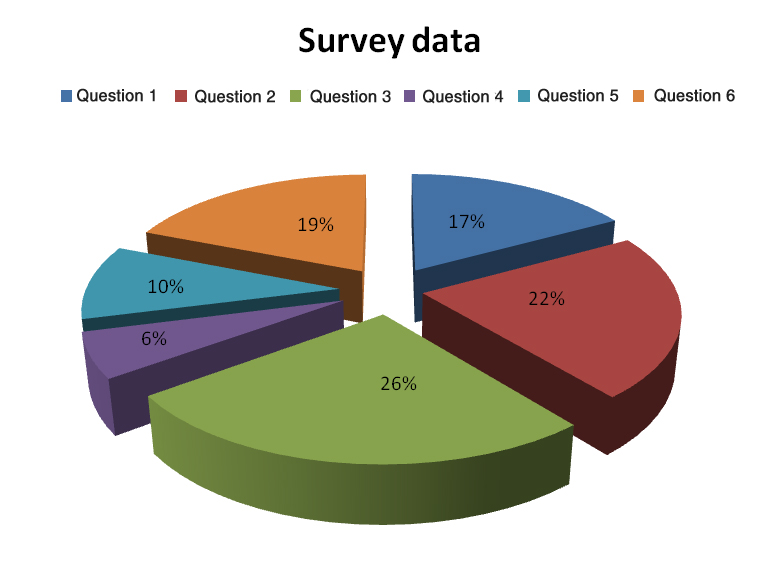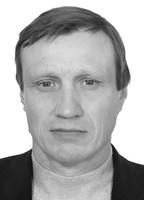Role of aerobics-driven practices in academic physical education of female students
Фотографии:
ˑ:
PhD, Associate Professor O.N. Samolovov1
PhD, Associate Professor N.V. Samolovova1
PhD, Associate Professor A.Y. Pashchenko1
1Nizhnevartovsk State University, Nizhnevartovsk
Keywords: physical education, elective academic sports, factors, aerobics.
Background. Modern physical culture is commonly acknowledged as a part of a broader social culture with the relevant values, regulations and knowledge base built up and applied for physical and intellectual development, physical activity excelling, healthy lifestyles promotion and social adaptation purposes by means of the relevant physical education, training and development systems. Academic physical education may be viewed as an integral part of the academic education system designed to help student acquire the relevant competences and skills to apply them in their lives and professional careers.
Many studies have demonstrated that the students engaged in systemic and active physical education and sporting process normally develop healthy lifestyles, high confidence and stamina showing at the same time better communication, cooperation and social adaptation abilities, skills and accomplishments. Sporting students are also known to be generally more responsible, disciplined, conscientious and determined; showing a better emotional balancing ability, tenacity, optimism and leadership qualities in teamwork. All these mental and physical qualities and abilities may be developed by systemic and active academic physical education and sporting practices, particularly when the trainees are highly interested, enthusiastic and striving to assert themselves so as their skills and qualities are duly acknowledged and appreciated by the surrounding people.
Objective of the study was to obtain socio-analytical data and use them to develop an aerobics-prioritising academic Physical Education and Sport curriculum.
Methods and structure of the study. The academic physical education process in Nizhnevartovsk State University is designed to cover the whole academic period. The modern academic physical education and sports facilities commissioned lately made it possible to offer individualized elective physical education and sporting courses to non-sporting department students who are offered 11 elective disciplines within the academic Physical Education curriculum. Presently the students are offered the following elective disciplines: basketball, volleyball, martial arts (Kyokushinkai karate), aerobics, health gymnastics, body conditioning (BC), futsal, table tennis, swimming and dancing courses; with special sporting services being offered to health-deficient students attributed to special health groups.
Female students normally give the highest preference to the aerobics courses. We performed a questionnaire survey to identify the key factors of influence on the sporting preferences of the female students. Having analysed the survey data on the students’ interests in aerobics, we rated the aerobics-electing student population versus the total student population engaged in the academic training and sporting process as required by the curriculum and education standards (FSES). We found that this proportion averaged 30% for the last three years. In the context of this finding, we made a special emphasis on aerobic exercises when developing our academic training program.
Study results and discussion. Having analysed the questionnaire survey data on the whole and responses of aerobics-preferring female students in particular, we came to the following conclusions. Their choice was explained by the following factors:
1. Willingness to develop the relevant systemic skills and abilities and obtain a practical physical education and sporting experience that could be beneficial for their further individual agendas, performance and physical qualities of importance for their lifestyles and professional careers; 17%;
2. Willingness to improve their physical fitness by focused practices in the elected sport discipline: 22%;
3. Health improvement agendas: 26%;
4. Occasional choices (driven by the friends’ advices/ recommendations – “was talked into the sport”): 6%;
5. Convenient training schedule (leaving some time for extra jobs – as many students have to work in the off-class hours): 10%; and
6. Personality of the educator (his/her experience, creative approach, sex assignment, appeal etc.): 19%.
The questionnaire survey data are given on Diagram 1 hereunder.

Diagram 1
In view of the high demand for the aerobics disciplines in the academic communities and to improve the efficiency of the academic aerobics courses, the training program was designed to include the following aerobics courses: step aerobics, fitball aerobics, stretching, Bosu balance gymnastics and yoga practices.
Step aerobics course is designed as follows. The introductory stage is geared to help master the basics of the sport so as to form a foundation for the primary knowledge and skills. To make the practices more efficient and appealing for the trainees, we designed sets of exercises so as to help master the basic skills via the movement sequences linked into dancing combinations with the difficulty level of every combination increased in a stepped manner in the training process, with all exercises done to music.
Fitball aerobics course is designed to include special physical practices with a large-size ball intended to develop virtually every muscle group by the relevant sets of exercises. The primary-stage practices are driven by the balancing skills developing goals, with the practice difficulty levels stepped up with time.
Stretching aerobics course is considered a special aerobics discipline giving a top priority to the musculotendinous system stretching, flexibility and elasticity developing practices. It may be pertinent to note that a due priority is given to stretching exercises in every academic aerobics course in fact.
Bosu balance gymnastics course implies practices with a special training appliance similar to the one applied in the fitball practices. Dominating in the primary-stage set of the Bosu balance practices are the stepping exercises, and later on an increasing priority is given to a variety of stretching, cardio-system training and strength-developing practices.
Yoga course is designed to help students master the Hatha Yoga basics, with the practices including shatkarma, yoga asanas, bandhas, mudras and pranayamas with some elements of pratyahara, dharana and dhyana. The Hatha Yoga course makes an accent on the pre-examination periods so as to help the students cope with the pre-examination fever, i.e. to relax the trainees, ease the mental stresses and mitigate the excessive brain activity.
Conclusion. The physical education courses overviewed herein have demonstrated the following benefits:
- They create facilitating environments for the teacher-and-student cooperation on the most determined and enthusiastic basis;
- The students are given a free choice of one or another sporting course and, hence, are more disciplined and determined in the training sessions;
- The students report being highly satisfied with the academic sporting services in their preferred sport disciplines;
- The University sport facilities are fully loaded;
- The physical education and sporting practices run in no conflict with the academic education process schedules; and
- The course attendance rates are fixable and monitored using special digital logbooks, with the trainees’ progress being rated in points on the relevant biweekly progress rating scale.
References
- Pashchenko A.Y., Samolovov N.A., Samolovova N.V. Osobennosti organizatsii uchebnogo protsessa po fizicheskoy kulture v vuze v usloviyakh samostoyatelnogo vybora studentami fizkulturno-sportivnoy spetsializatsii [Academic physical education process organization specifics in terms of students' independent choice of physical education and sports specialization]. Mir nauki, 2016, vol. 4, no. 1. Available at: http://mir-nauki.com/PDF/31PDMN116.pdf (free access). pp. 1-11. VAK Register 1781 (2016).
- Pashchenko A.Y. Fizicheskaya kultura v vuze v usloviyakh realizatsii FGOS VO novogo pokoleniya [Academic physical education in context of new generation FSES HE implementation]. Mater. IV Vseros. nauch.-prakt. konf. "Kultura, nauka, obrazovanie: problemy i perspektivy". Ch. II. [Proc. IV All-Rus. res.-pract. conf. "Culture, science, education: problems and prospects." Part II.]. Nizhnevartovsk: NSU publ., 2015, pp. 182-184.
- Samolovov N.A., Samolovova N.V. Realizatsiya printsipov lichnostno-orientirovannogo podkhoda na zanyatiyakh po fizicheskoy kulture [Realization of principles of personalised approach at physical education classes]. Mater. II Vseros. nauch.-prakt. konf. s mezhdunar. uchastiem "Perspektivnye napravleniya v oblasti fizicheskoy kultury, sporta i turizma" [Proc. II All-Rus. res.-pract. conf. with intern. participation "Perspective directions in physical culture, sports and tourism"]. Nizhnevartovsk: NHU publ., 2011, pp. 360-363; pp. 77-78.
- Samolovov N.A., Samolovova N.V. Osobennosti organizatsii uchebnogo protsessa po predmetu «Fizicheskaya kultura» v NGGU [Academic physical education process organization features in NSU]. Mater. II Vseros. nauch.-prakt. konf. s mezhdunar. uchastiem "Perspektivnye napravleniya v oblasti fizicheskoy kultury, sporta i turizma" [Proc. II All-Rus. res.-pract. conf. with intern. participation "Perspective directions in physical culture, sports and tourism"]. Nizhnevartovsk: NHU publ., 2012, pp. 360-363.
Corresponding author: korichko_nv@mail.ru
Abstract
The national government gives an increasing priority to the academic physical education improvement initiatives, with universities taking the lead in the persistent health protection and promotion activities with an emphasis on the students’ performance and physical fitness building aspects. The academic physical education curriculum and its priority vectors, however, are strongly affected by a variety of socio-economic factors, and presently the national higher education system is still in need of new concepts to help step up the academic physical education quality.
Nizhnevartovsk State University offers individualized elective physical education and sport courses to non-sporting department students who are offered elective disciplines within the academic Physical Education curriculum, with the female students found to give the highest preference to the aerobics course. We performed a questionnaire survey to identify the key factors of influence on the sporting preferences of the female students.




 Журнал "THEORY AND PRACTICE
Журнал "THEORY AND PRACTICE